Sixty years ago this week the last passenger trains rain on the County Donegal Railways. Its popular knowledge the last public trains bowed out on December 31st 1959, but what is less known is the railway continued solely as a regular freight operation for a further five weeks or so. Which means, like several other narrow gauge systems both in Britain and Ireland, services soldered on longer without passengers. The freight service officially ended 6th February 1960 however its said an impromptu service was provided for a few more months.
Its a difficult task to write about the County Donegal Railways Joint Committee without writing too about the earlier railways which were built and eventually formed part of the CDRJC. In a nutshell that came about because it was decided the narrow gauge and standard gauge systems (some of which were converted to narrow gauge) in north-west Ireland should come under one overall supervising body.

The old Donegal Railway poster. This was before the various lines were merged under the CDRJC. Source: EBay – plenty of other CDRJC memorabilia here.
The CDRJC’s acquisitions eventually resulted in a quite substantial narrow gauge railway system consisting of well over 120 miles. This was connected to the Lough Swilly Railway’s network at Letterkenny so there was in fact a total of 235 miles in the entire three foot gauge network – and some have pointed out it was in fact the largest narrow gauge railway network in Europe.
For a narrow gauge railway in this part of Europe, the CDRJC had the longest journeys of all with a couple or so trains a day undertaking the entire journey between Derry and Killybegs, a distance of sixty five miles. Most journeys however were Derry/Strabane to Donegal and then change for either Ballyshannon or Killybegs.
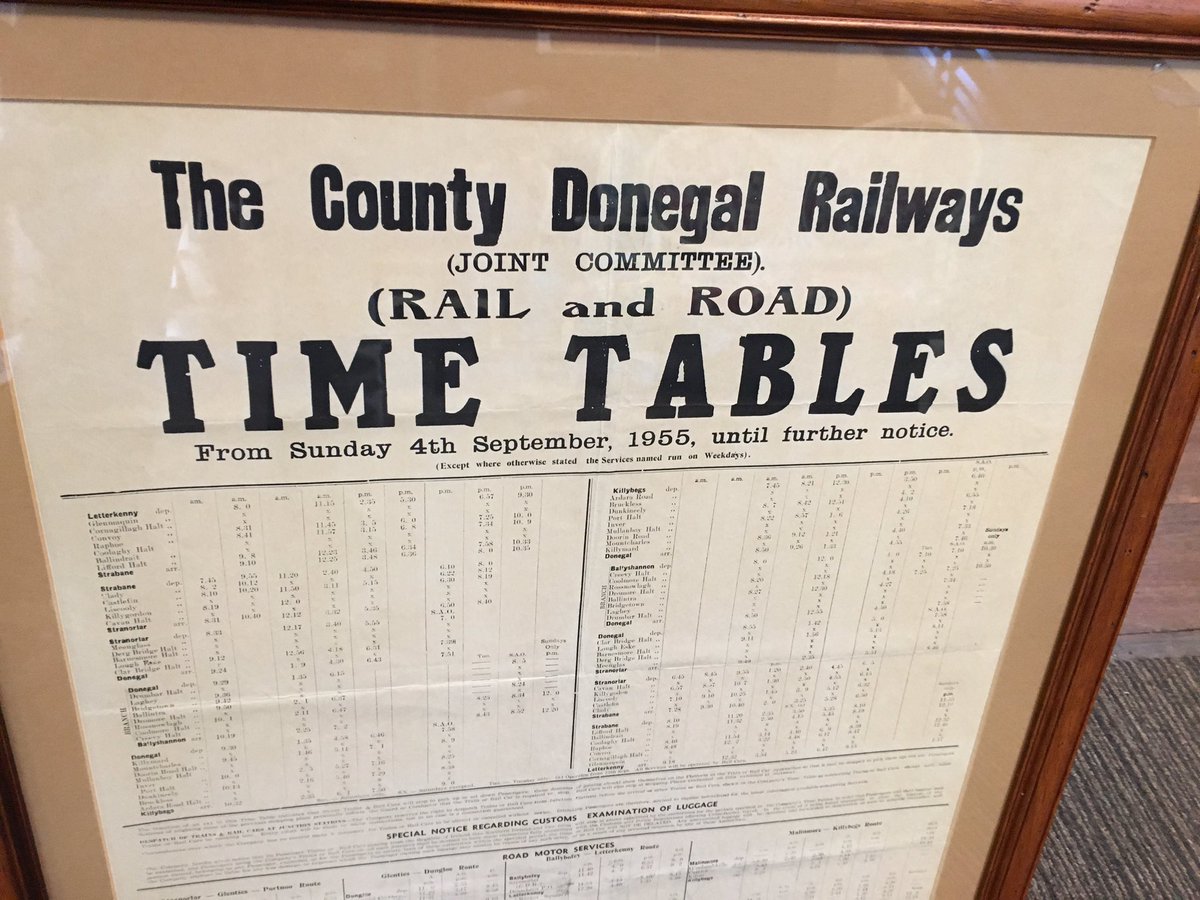
CDRJC timetable for 1955. Source: Twitter.
Despite being a narrow gauge railway the CDRJC was in fact noted for pioneering the use of diesel railcars and locomotives, in fact it was the first railway in the world to use these new forms of motive power. This pioneering work was due to the railway’s famous manager, Henry Forbes, based at Stranorlar.
The first diesel railcars on the line were actually buses bought from the Derwent Valley Railway in Yorkshire during 1929. As related in E.M.Patterson’s book these buses were converted to rail use. The company’s experience with these early diesels certainly made the CDRJC a pioneer railway company because it built the world’s first ever diesel railway locomotive called ‘Progress.’
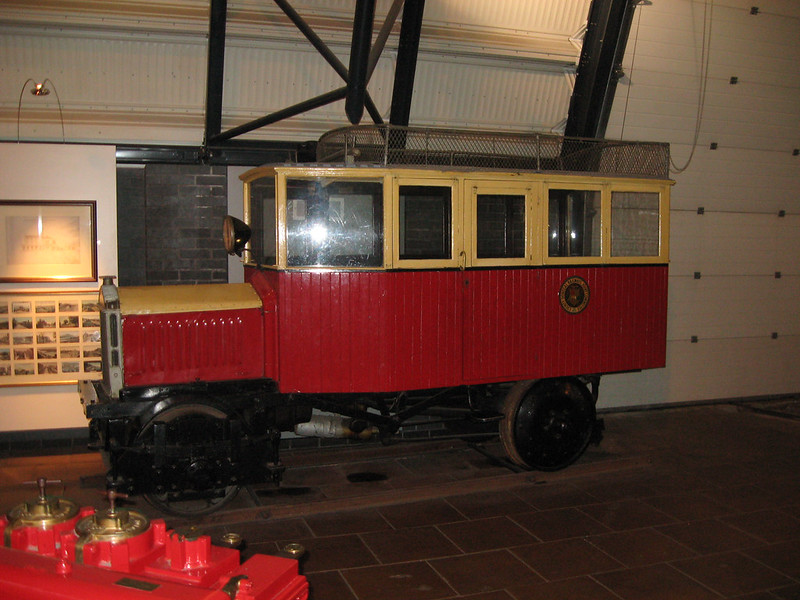
The bus that became a train! The converted railcar today at the Ulster Transport Museum. Source: Flickr.
Henry Forbes was also on the committee of the Clogher Valley Railway and he too encouraged that line to modernise by investing in diesel railcars. When the Clogher Valley closed the CDRJC acquired these railcars. The pioneering diesel locomotive Phoenix also came from the Clogher Valley railway. It had originally started life as a steam tram engine, but wasn’t successful. The CDRJC purchased it and Forbes had it converted to diesel.
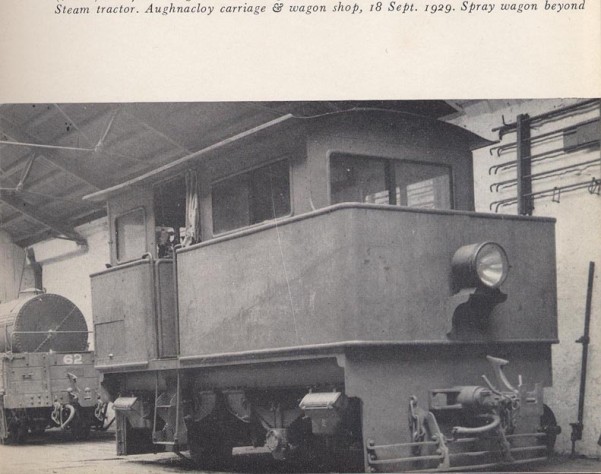
Phoenix in its earlier form as a steam tram locomotive. It remained unused in the CVR’s Aughnacloy works for three years until Forbes had it purchased. Source: 16mm Modellers.
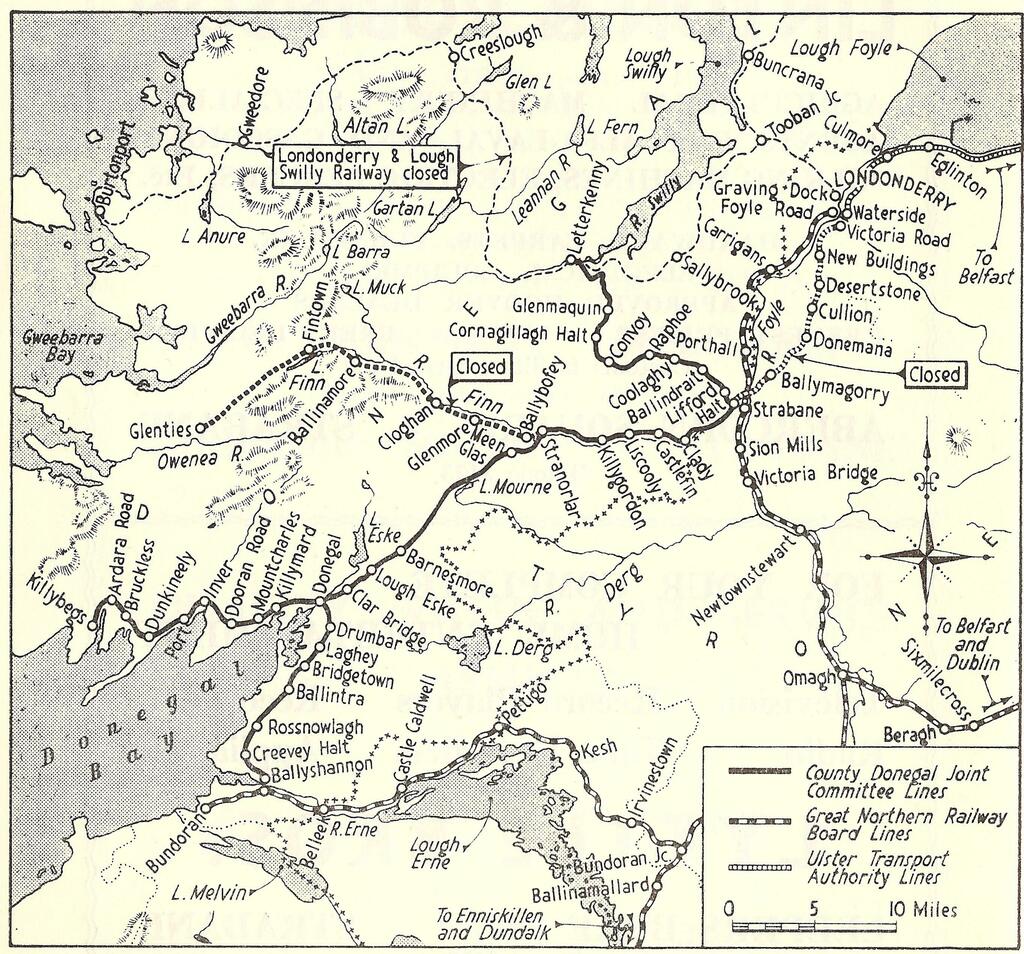
The CDRJC system 1958. The Glenties line closed 1947 and Strabane – Victoria Road closed 1954. Source: Twitter. (Note: Account suspended or deleted thus an archived image is used here.)
CDRJC distances:
Derry to Strabane 14 miles (23km); Strabane to Letterkenny 19.25 miles (32km); Strabane to Stranorlar 13.5 miles (22km); Stranlorlar to Glenties 24 miles (39km); Stranorlar to Donegal 18 miles; Donegal Town to Ballyshannon 16 miles (26km); Donegal to Killybegs 19 miles (31km.)
Next: Pics & history of the various lines/stations managed by the CDRJC:
Strabane
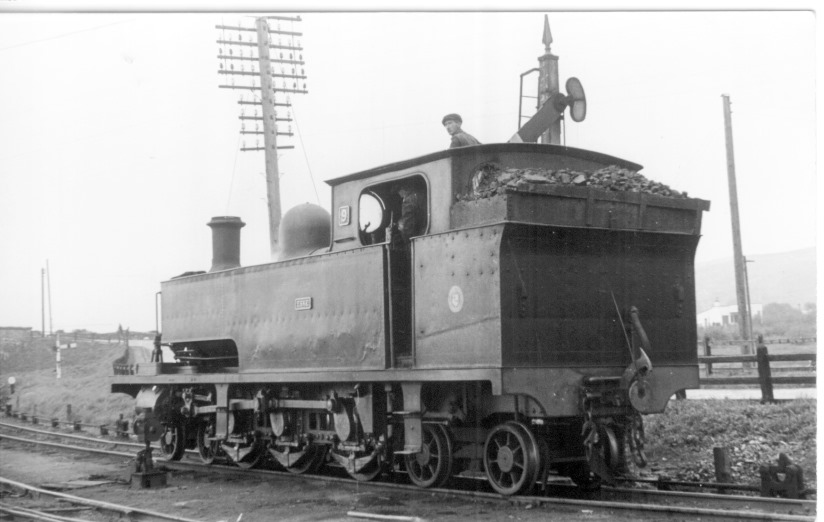
Eske at Strabane in 1948. Source: Facebook.

Strabane. Source: Pinterest.
Its said Strabane station was the largest railway junction in Ireland. Its correct in terms of the routes offered, however there was just one actual junction! There were lines radiating in five different directions from here – three narrow gauge and two standard gauge. And the one junction for the narrow gauge splitting the lines towards either Derry or Letterkenny.
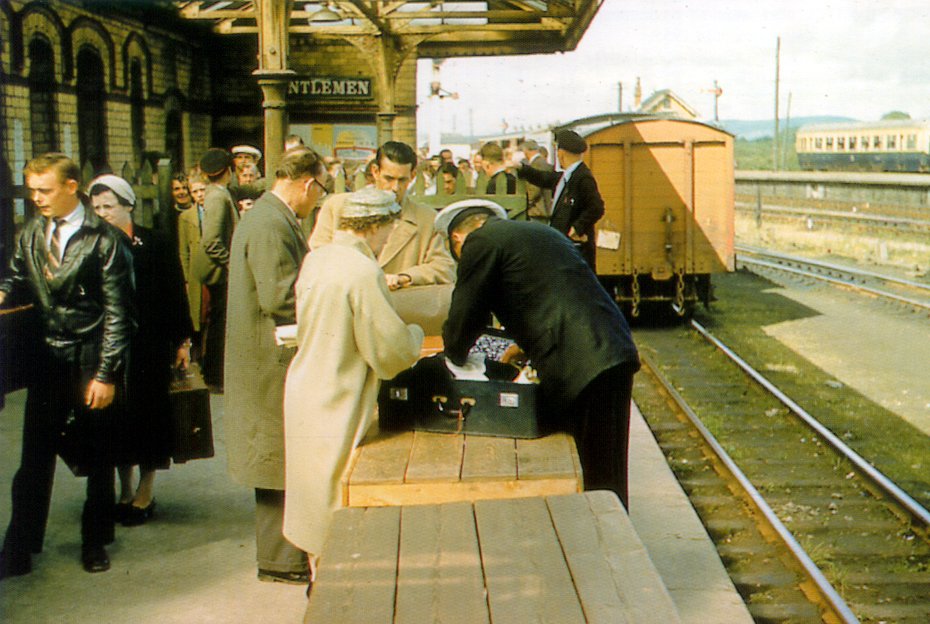
Customs inspection at Strabane 1958. Source: Twitter.
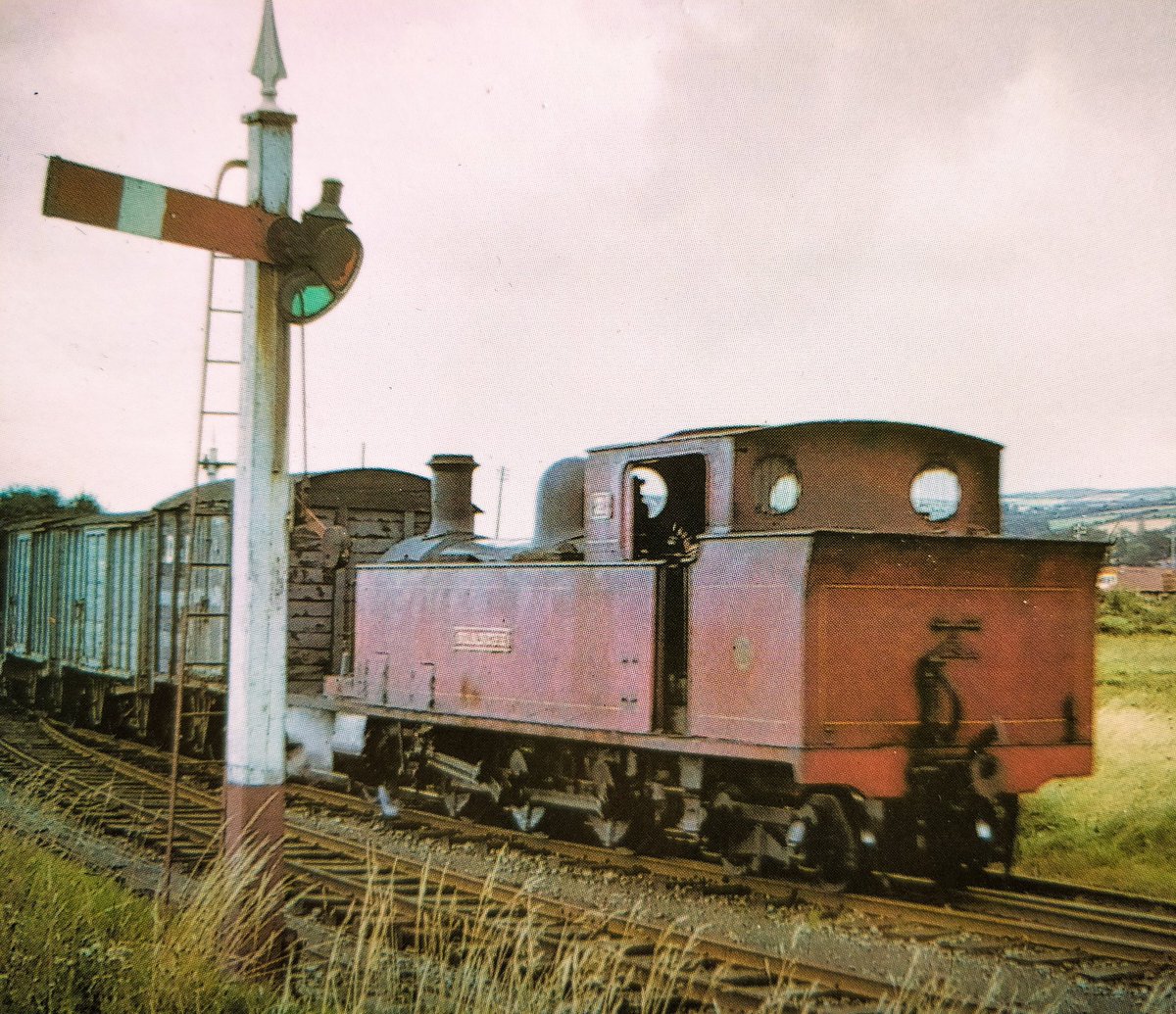
Near the end. No.2 Blanche with a freight at Strabane. August 1959. Source: Twitter.
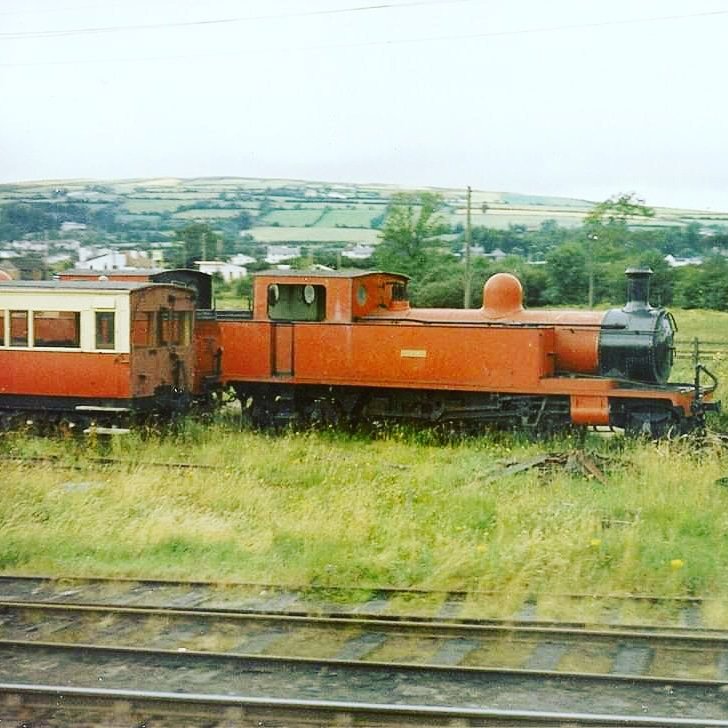
Abandoned CDRJC stock at Strabane, seen 1964. Source: Twitter.
Stations from Strabane to Stranorlar were at Clady, Castlefin, Liscooly and Killygordon. For the purposes of this feature just the more important stops westwards to Killybegs are shown.
At this point it must be mentioned the railcars stopped at many places besides stations and halts. These were usually at crossing gates where there was a keeper present. The CDRJC however found many of these stops rather untenable in terms of timetable keeping. In 1944 the committee ordered that an approved list of unofficial stops be used as a means to try and keep its trains to time.
Castlefinn
Castlefinn was at the border crossing thus this small station was of considerable importance. Its also where the railway operations were centered in the final few weeks of services after the passenger side of the railway had closed in 1959.
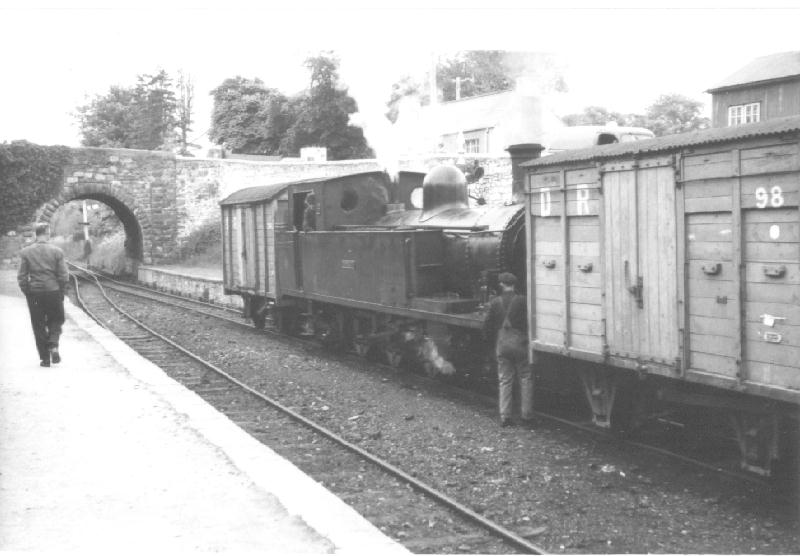
Castlefin station. Source: Castlefin Online.

Meenglas at Castlefinn. The table on the right was for customs and invariably all the passenger trains used this platform. Source: Flickr.
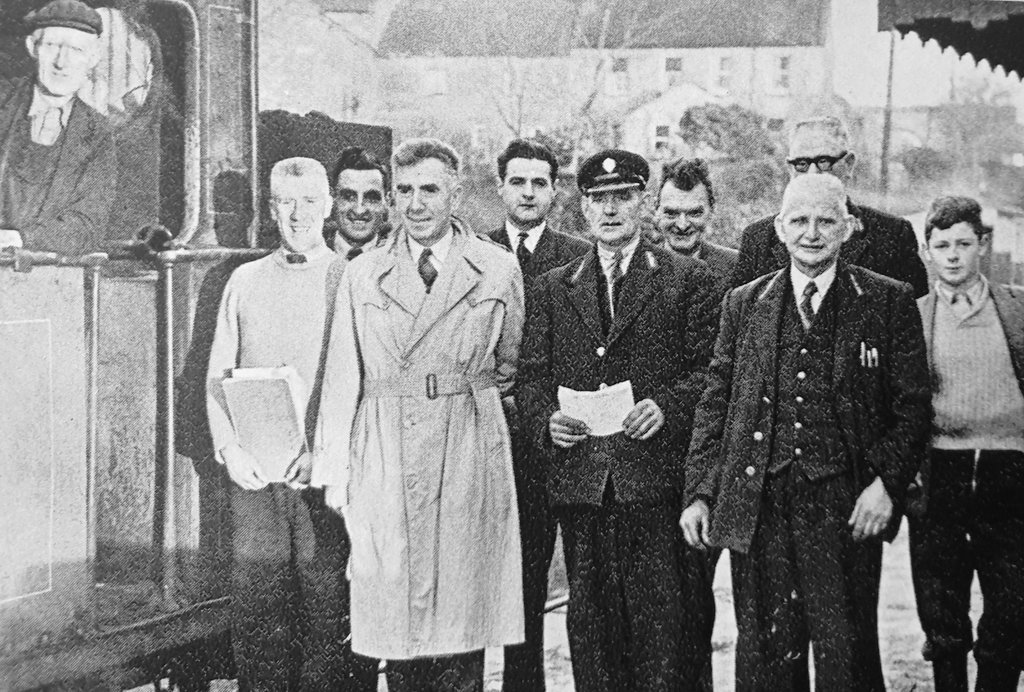
After official closure, Castlefin was the subject of a photo opportunity on 1st January 1960 with members of the CDRJC’s staff present. Clearly that locomotive had to steam here thus the railway was still operational! Source: Twitter.
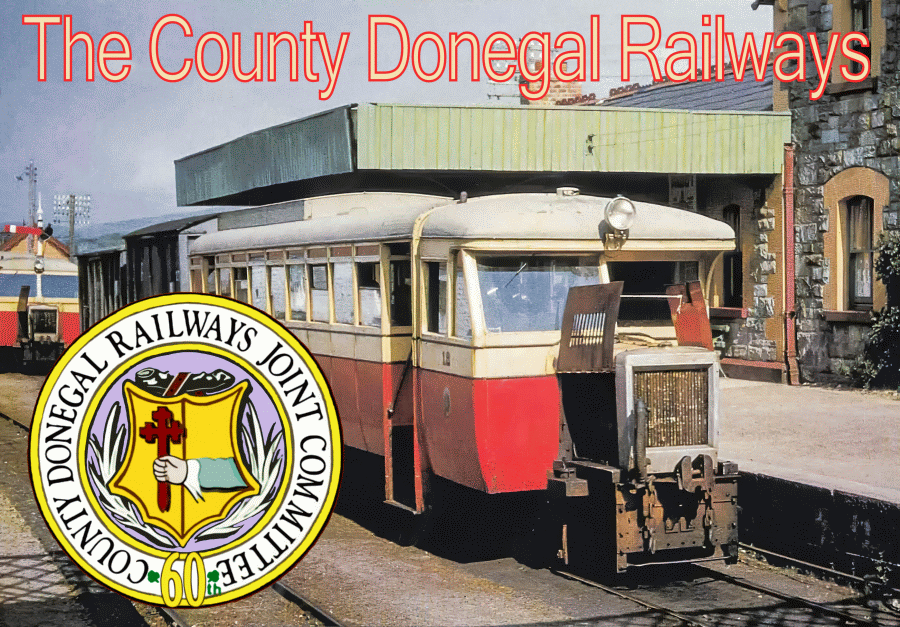
3 responses to “The County Donegal Railways”
Excellent blog!
I am sketching out a blog of my own on the route of the Glenties Branch and wondered if you would object to me linking two photos from your blog – of the station at Stranorlar. Usually when a link is made the picture automatically gets included in my blog.
Sincerely
Roger
Its okay! Its just that when you say automatically linked, link rot is a problem in keeping any historic content on the internet alive and I struggle to keep all the context exactly as it was when first published. Glad you liked my posts on the CDRJC. Thanks! 🙂
Very interesting site. In the photo at Castlefin 1.1.60 I think that is Ricky Dunnion who was a great friend to me when I was in Londonderry Waterside in the late 60’s and early 70’s when the Donegal freight came through there.